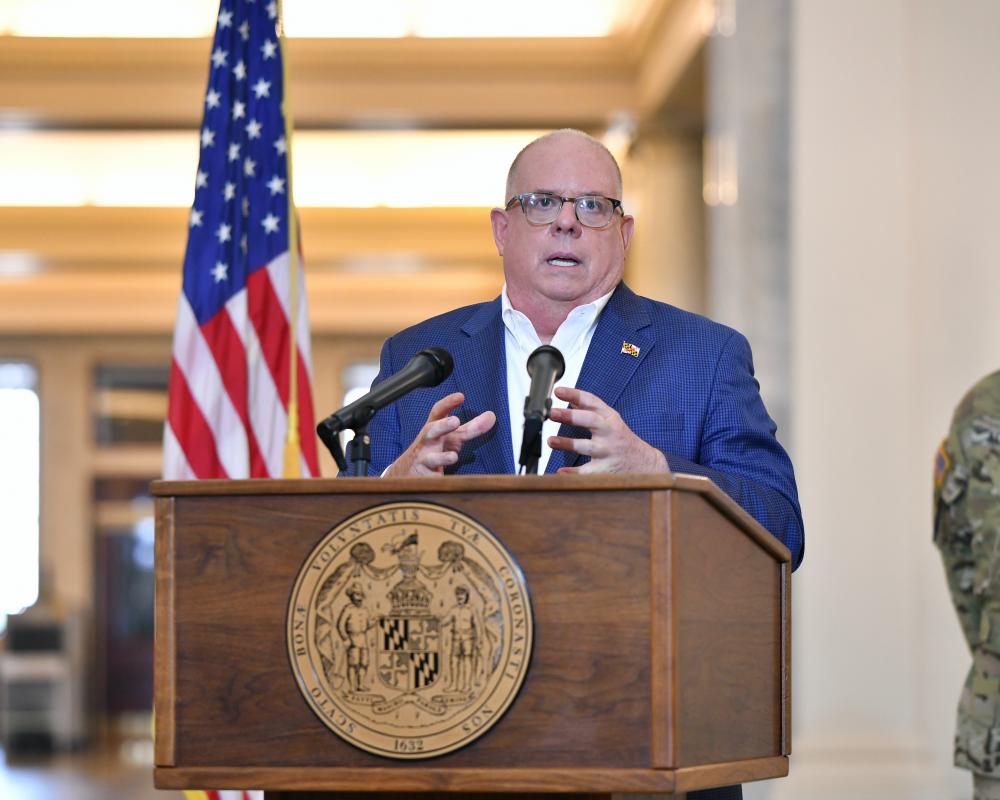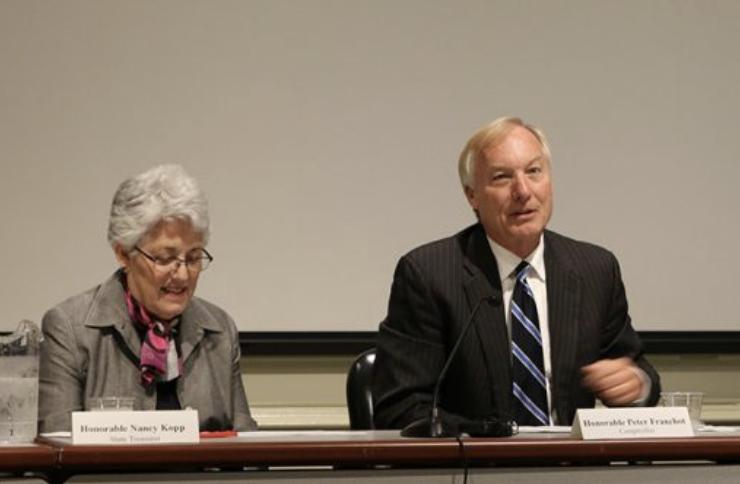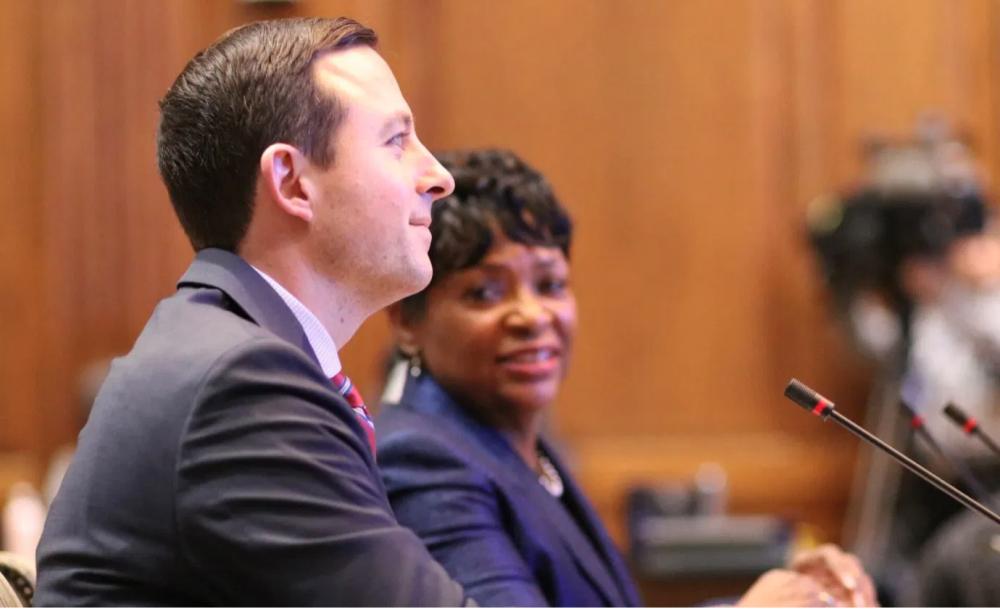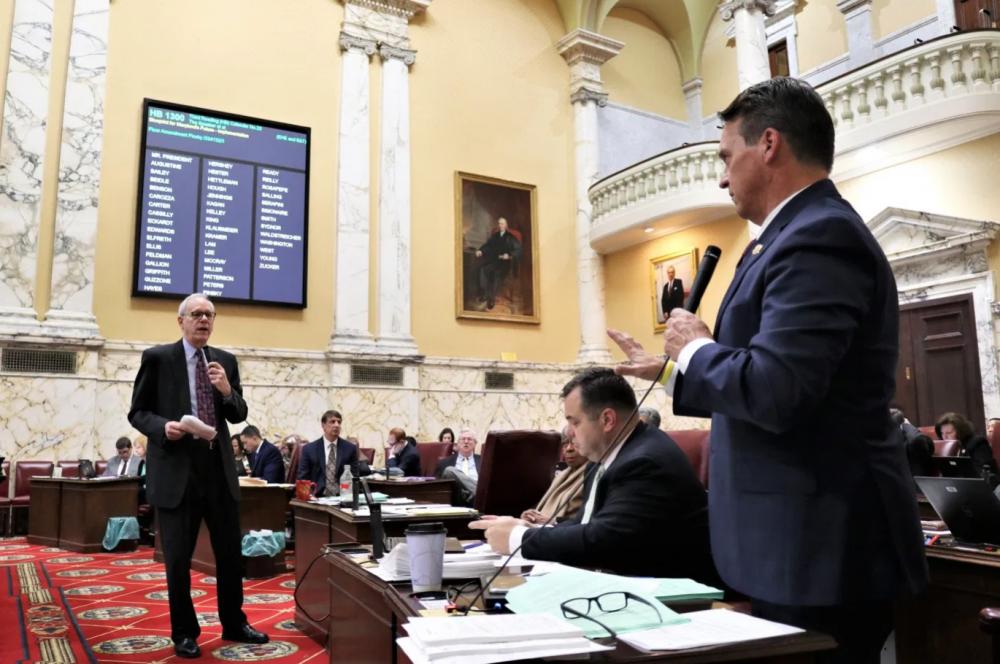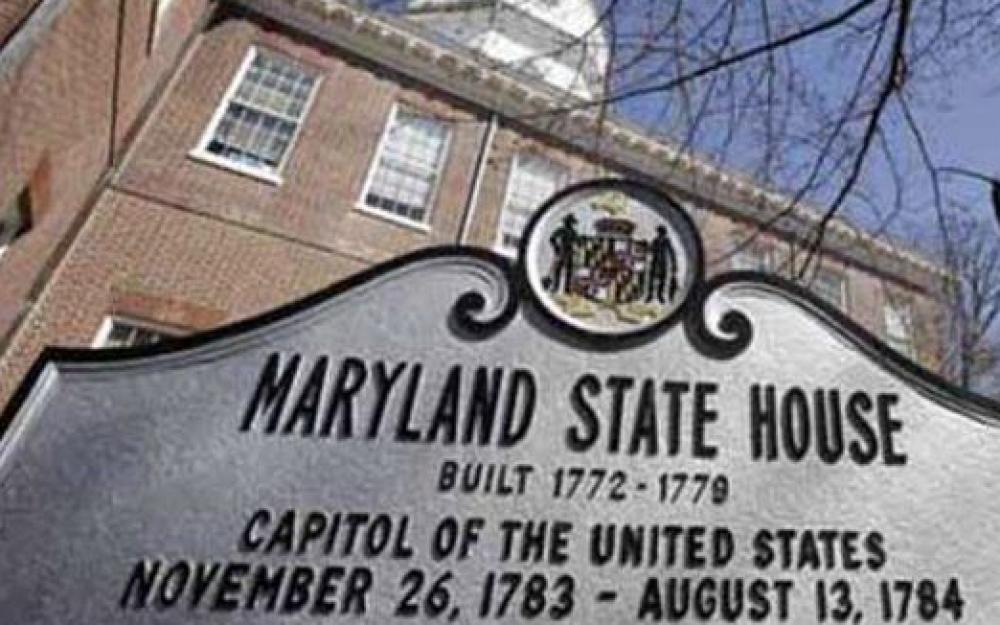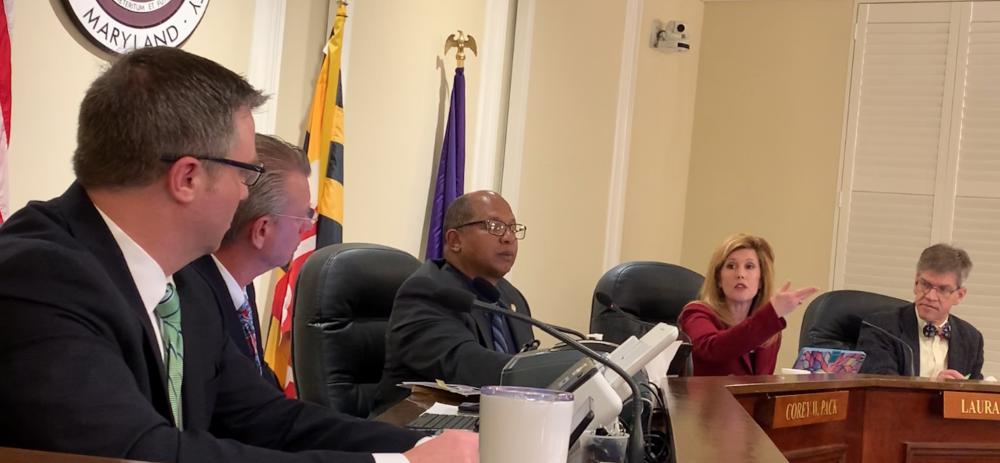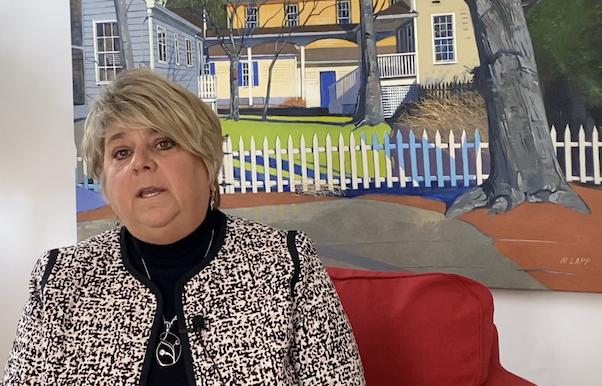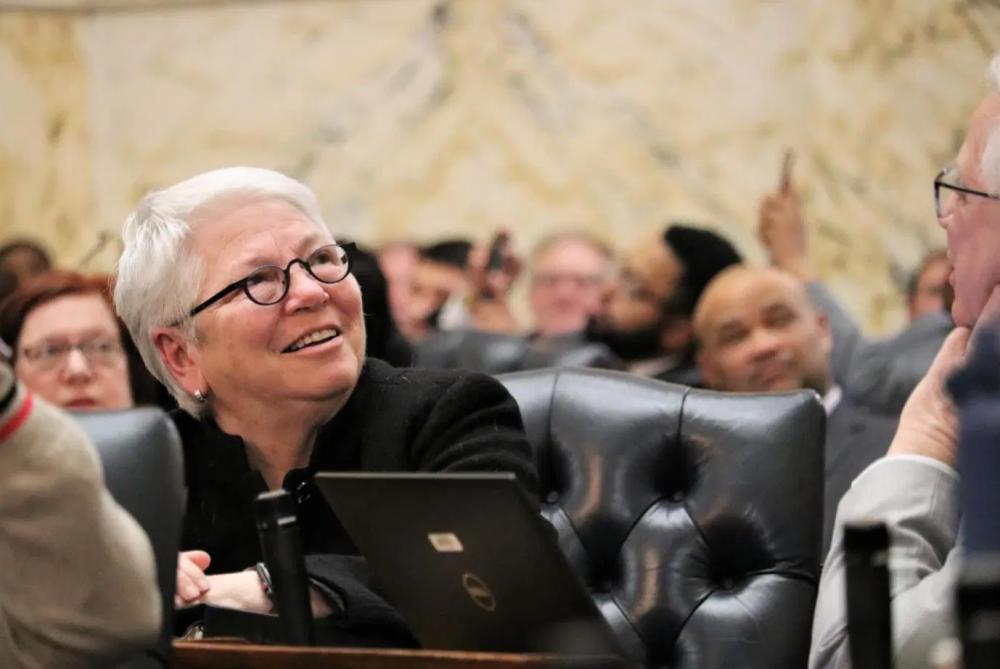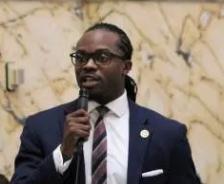With a trio of unusual veto letters, Gov. Lawrence J. Hogan Jr. (R) vetoed nearly three dozen bills passed by the 2020 General Assembly, including a proposed multibillion-dollar education reform plan, as well as the revenue bills to fund it.
Citing economic challenges brought on by COVID-19, Hogan vetoed Democrats’ top priority: House Bill 1300, the 235-page Blueprint for Maryland’s Future bill, which lays out a broad education reform plan that would have increased state and local annual education spending by almost $3.4 billion in 10 years.
Policy changes at the heart of the years-long reform effort are meant to address economic and racial disparities in education by expanding pre-kindergarten programs and career education for high schoolers, bolstering pay and career opportunities for teachers, and increasing state funding for schools with high concentrations of poverty.
The entire House Republican caucus opposed the bills during the legislative session, but last-minute financial protections in the Blueprint bill attracted support from a half-dozen Republicans in the Senate.
“The economic fallout from this pandemic simply makes it impossible to fund any new programs, impose any new tax hikes, nor adopt any legislation having any significant fiscal impact, regardless of the merits of the legislation,” Hogan wrote in a letter vetoing the Blueprint bill, as well as 21 others that would have required increased spending.
That includes House Bill 1260, which would have provided an extra $577.7 million over the next decade for the state’s four historically black colleges and universities, with the aim of settling a years-long lawsuit against the state for disparity in funding and resources.
Hogan announced final action Thursday on the more than 680 bills passed by the General Assembly during the truncated 2020 session. The governor can sign bills, veto them or let them take effect without his signature.
His actions come during an uncertain time for government finances ― from the federal level down to cities and towns.
Maryland’s Bureau of Revenue Estimates has suggested that the state may lose as much as $2.8 billion in revenues because of the COVID-19 pandemic before the end of this fiscal year, with more losses to come next year. Last month, Hogan froze discretionary spending in state agency budgets, instituted a widespread hiring freeze and warned agencies to begin looking for ways to trim budgets. And the state’s fiscal experts have warned that the COVID-19 pandemic response could completely drain Maryland’s $1.2 billion rainy day fund.
Hogan grouped 10 other vetoed bills into two groups: those that raised taxes and others that “failed to meaningfully address violent crime,” an issue over which he regularly clashed with legislators during the 2020 session.
He vetoed five other bills on disparate topics, including a ban on the pesticide chlorpyrifos, a bill that would have expanded MARC train service into Virginia and Delaware, and a measure to limit the authority of the Board of Public Works in purchasing property.
On the tax front, Hogan vetoed the two primary measures pressed by Democrats to fund the Blueprint education reforms.
House Bill 732 would have levied an increased tax rate on tobacco and vaping products, and would also create a first-of-its-kind tax on digital advertising.
The bill would have increased the tax on a pack of cigarettes from $2 to $3.75 and apply a new tax to vaping products and e-cigarettes to generate about $90 million in new state tax revenue next year.
Other provisions of the bill would have imposed a gross receipts tax on ads by digital platforms with more than $100 million in annual, global advertising revenue. The tax could generate up to $250 million a year.
House Bill 932, the 21st Century Economy Fairness Act, would have applied the state’s 6% sales tax to downloads of products like books, music and streaming services. The bill could have generated more than $80 million next year.
The first year of revenue from the new tax would have been dedicated to costs associated with the state’s COVID-19 response, while future years would be dedicated to education reforms.
“These misguided bills would raise taxes and fees on Marylanders at a time when many are already out of work and financially struggling,” Hogan wrote. “With our state in the midst of a global pandemic and economic crash, and just beginning on our road to recovery, it would be unconscionable to raise taxes and fees now.”
Gun bill vetoed
On crime bills, Hogan vetoed Senate Bill 907, a Democratic priority that would establish a statewide Law Enforcement Coordinating Council to prevent and reduce crime by focusing on interagency communication and intelligence-sharing, and Senate Bill 929, The PROTECT Act, which would have required the state to identify 10 high-crime micro-zones and target additional crime-fighting resources in those areas.
The governor also vetoed House Bill 4, which would have required background checks for people acquiring rifles or shotguns from private sales or transfers.
The bill has been a Democratic priority for the last two legislative sessions. The bill’s sponsor, Del. Vanessa Atterbeary (D-Howard), tweeted that she was “beyond disappointed” with the veto of the bill.
Other lawmakers took exception to Hogan’s veto letter, in which he highlighted the failure of the House of Delegates to pass his own crime bill proposals.
“I expressed my strong willingness to consider other proposals, including some of those passed by the legislature, if they were included as part of a comprehensive crime package which included my proposals,” Hogan wrote.
While the Senate incorporated portions of Hogan priorities into a package in that chamber, the House did not take up the package “and thus failed to meaningfully address violent crime,” Hogan wrote.
“Pouting doesn’t solve gun violence,” Del. Brooke E. Lierman (D-Baltimore City) tweeted in response to the veto letter. “Tragic & frustrating.”
House Majority Leader Eric G. Luedtke (D-Montgomery) said his party would consider overriding a number of the vetoes issued Thursday, and he questioned the rationale for some of the governor’s actions.
“The governor is trying to sell this as fiscal responsibility, but he vetoed a bill closing the last loophole in our background check system for guns, he vetoed a bill banning a toxic pesticide. This is right-wing red meat,” Luedtke said. “…The governor had a chance to rise above politics a little bit with the leadership he’s shown on coronavirus and these vetoes demonstrate he hasn’t done it.”
How to move forward
Legislative leaders ― who recently announced they wouldn’t meet in special session this month, as they’d originally hoped after the regular legislative session was cut short ―reacted with disappointment immediately after the final actions were announced.
“Throughout this Session, the General Assembly took steps to ensure we left the state with a historically high fund balance and rainy day fund, together with a variety of tools to deal with this crisis,” Senate President Bill Ferguson (D-Baltimore City) said in a statement. “At the same time, we passed legislation that looked to the future of the state, and made certain to pass policies which will help our state emerge strongly from this crisis. With today’s actions, instead of setting us on a path to a secure recovery, the Governor is stopping all progress where it stands.”
He and House Speaker Adrienne A. Jones (D-Baltimore County) said they will consult about how to move forward.
“While we are in the midst of a public health and economic crisis of an extraordinary magnitude, stopping progress on education and school construction puts us even further behind. We know that there are students across this State that are losing millions of hours of learning,” Jones said in a statement. “The result of this short-sighted action is Maryland will continue to graduate students that are not ready for the real world.”
Legislative leaders did not discuss the possibility of summer or fall special session to address vetoes on Thursday.
If the legislature does not override gubernatorial vetoes on spending bills before July 1, Hogan does not have to consider funding for those bills in his proposed 2022 budget.
If lawmakers ultimately decide to forgo a special session, they could override the governor’s vetoes in January, when their regular session convenes and the state’s fiscal outlook may have improved.
The HBCU funding bill would have required a settlement before December. If lawmakers don’t meet in special session before then, a 13-year lawsuit against the state could be revived and a settlement could be dictated by the courts.
Hogan allowed hundreds of other House and Senate bills to become law without his signature.
That includes House Bill 1, the Built to Learn Act, which authorizes the Maryland Stadium Authority to issue up to $2.2 billion in bonds to pay for school construction projects around the state. However, the school construction bill, which was similar to a separate proposal from Hogan, was contingent on enactment of the Blueprint reform bill that was vetoed.
Hogan did not sign a single bill.
By Danielle E. Gaines
